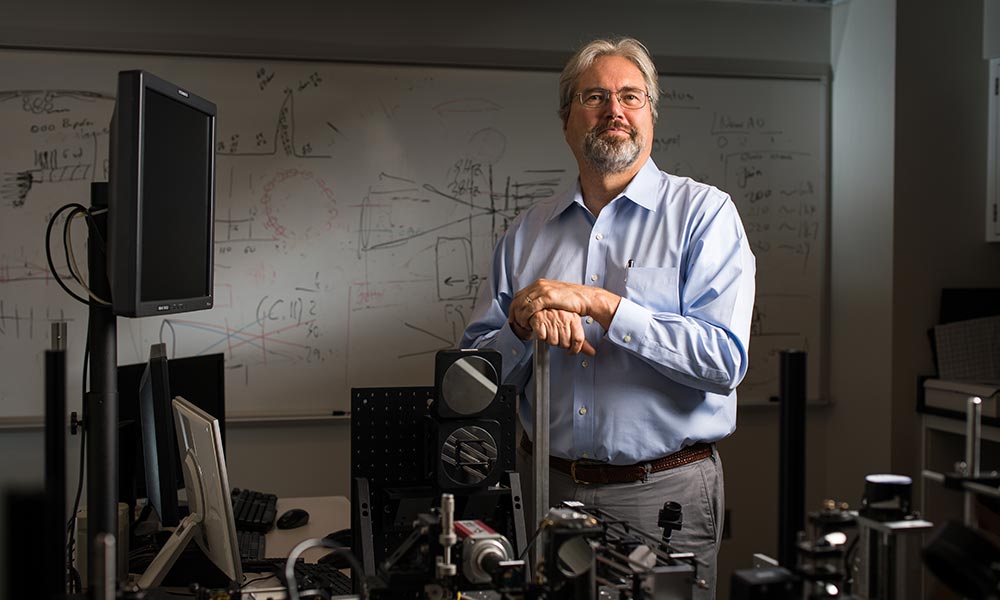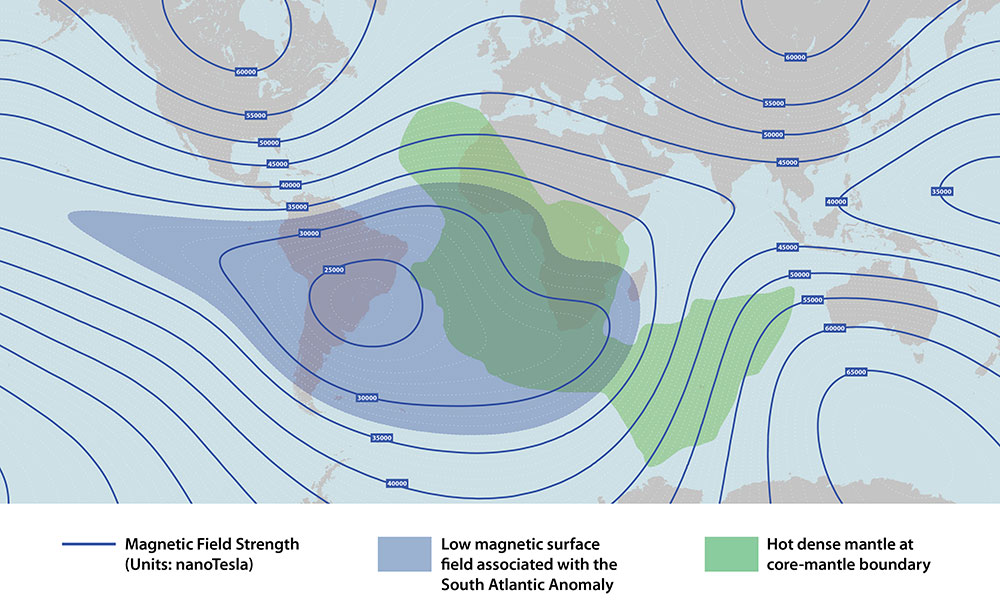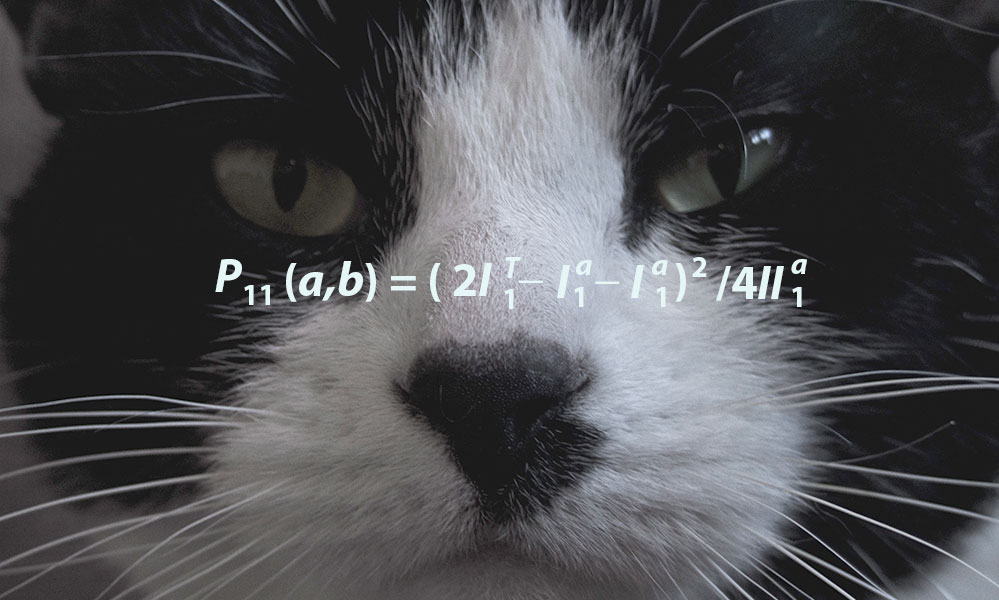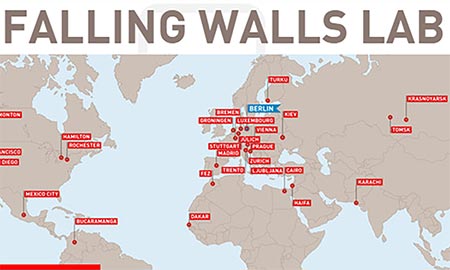
Vision expert David Williams receives Beckman-Argyros Award
David Williams, widely regarded as one of the world’s leading experts on human vision, received the $500,000 prize for his transformative breakthroughs in vision research and adaptive optics.

Researchers find that Earth’s magnetic shield is 500 million years older than previously thought
Since 2010, the best estimate of the age of Earth’s magnetic field has been 3.45 billion years. But now the Rochester researcher responsible for that finding has new data showing the magnetic field is far older.

First measurements taken of South Africa’s iron age magnetic field history
Combined with the current weakening of Earth’s magnetic field, the data suggest that the region of Earth’s core beneath southern Africa may play a special role in reversals of the planet’s magnetic poles.

Drawing a line between quantum and classical: Bell’s Inequality fails test as boundary
The best guide to the boundary between our everyday world and the “spooky” features of the quantum world has been a theorem called Bell’s Inequality, but now a new paper shows that we understand the frontiers of that quantum world less well than scientists have thought.

Babies’ expectations may help brain development
A series of studies with infants 5 to 7 months old has shown that the portion of babies’ brains responsible for visual processing responds not just to the presence of visual stimuli, but also to the mere expectation of visual stimuli.

Funding aimed at fusion energy awarded to Laboratory for Laser Energetics, Sandia National Laboratories collaboration
The award seeks to build upon recent successes of Sandia’s Magnetized Liner Inertial Fusion (MagLIF) concept. The concept uses a laser to heat fusion fuel contained in a small cylinder as it is compressed by the huge magnetic field of Sandia’s massive Z accelerator.

How understanding GPS can help you hit a curveball
Our brains track moving objects by applying one of the algorithms your phone’s GPS uses, according to researchers at the University of Rochester. This same algorithm also explains why we are fooled by several motion-related optical illusions, including the sudden “break” of baseball’s well known “curveball illusion.”

MC10 partners with University to advance patient-centered research
Massachusetts company MC10 will join forces with the University to test its BioStamp wearable biometric technology in various clinical settings, and to work to translate patient healthcare data into new treatments and predictive health analytics.

Falling Walls Lab: Young researchers present ideas that remove barriers to progress in science, society
Thirty-three scientists, inventors, and entrepreneurs will have three minutes each to present their innovative idea in a rapid-fire competition to win a spot at the prestigious Falling Walls Lab Finale in Berlin.

Defects in atomically thin semiconductor emit single photons
Until now, optically active quantum dots have not been observed in materials consisting of a single layer of atom, also known as 2D materials. Rochester researchers have shown how the 2D material tungsten diselenide can be fashioned into an atomically thin semiconductor that serves as a platform for solid-state quantum dots.
